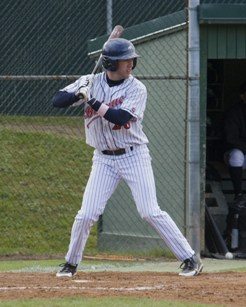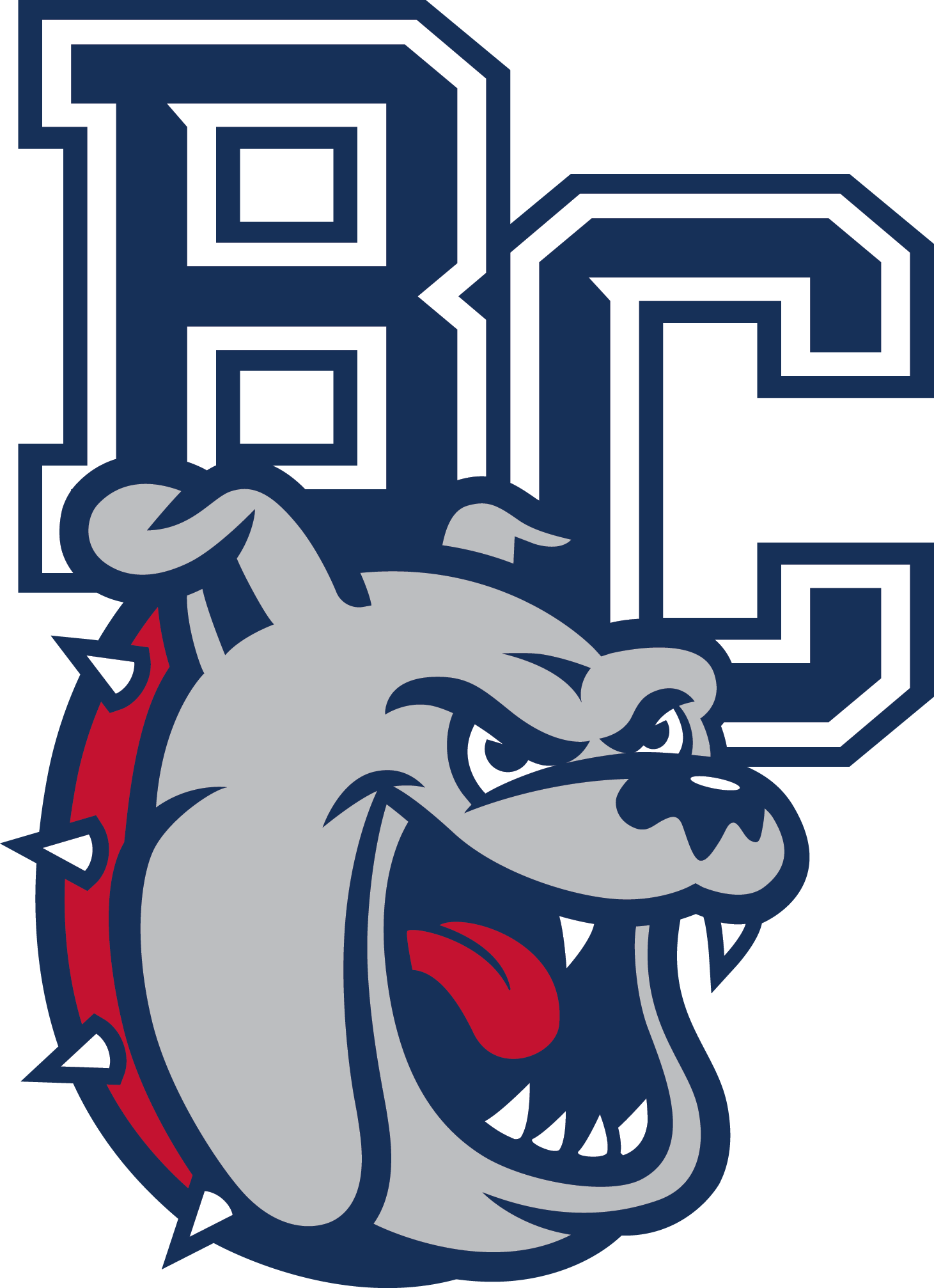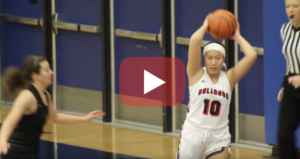Squad Will Have a Veteran Look With Only Two Returning Starters

a talented mix in the outfield in ’09.
With only two everyday starters back from 2008, most teams would have a degree of uncertainty heading into the 2009 spring. However, the influx of veteran transfers has given the ’09 Bulldog squad a veteran feel. The experience seemed evident this fall, as Bellevue dropped only one game during the informal scrimmage season against outside opponents. “All of the strengths we had when we won the NWAACC Championship in ’07 were missing in ’08, but returned this fall, which is a good sign for this spring,” says Coach Mark Yoshino. Sophomore transfers who have given the ’09 team a seasoned look include shortstop Bryan Barnes (transfer from Gonzaga), catcher Brodie McCormack (Washington State), Dan Johansen (Columbia Basin College), Kirk Wetmore (Washington), Jeff Bethke (Point Loma Nazarene, CA), Aaron Parente (Sacramento City College), and Ryan Burnett (Midland College, TX).
The freshmen on the squad should not go without mention even though the team has veterans abound. In fact, the ’09 season should be one of the most competitive teams in years as this is the first season in Yoshino’s eleven-year tenure that he did not take in any walk-ons or freshmen to “grow” with the program. There are only nine true first-year freshmen on the squad this year, and all nine of them are expected to be contributors with their immediate ability.
Pitching
Buckham Leads Group of Big-Time Lefties
Two of the top freshmen this spring are projected to be two of the top left-handed pitchers in the northwest as well in T.J. Parthemer and Ian Parmley. Undefeated for the dominating Eastside Catholic prep team last spring, Parthemer has grown throughout the years into one of the top lefties in the area. His experience he will gain at the two-year college level will only make him more of a bona fide recruit for a four-year university or possibly even the major league draft. Parmley is reminiscent of former Bellevue pitcher Zach Kimball, who garnered fourteen wins in his two years at Bellevue before transferring on to pitch with success for an NCAA Super Regional team (North Carolina-Wilmington). Parmley not only has four pitches for strikes, but has a unique competitiveness about him which makes him rise to the top on whatever team he’s on. He’s not only a seasoned pitcher, but is also one of Bellevue’s offensive catalysts on a team that’s loaded with speed and the ability to hit for an average. Sophomore Brian Buckham will enter the spring as the number one starter. Although he has signed to pitch at the University of Oregon, he’s a candidate for the June draft with his upper-80 mph fast ball, above average breaking ball, and ability to pitch. He’s reminiscent of a senior left-hander at a NCAA top-20 school right now. Bethke and Wetmore are two transfers who are looking to make a big splash at the two-year level this spring. Bethke is your prototype crafty left-hander with outstanding breaking pitches while Wetmore may be the biggest sleeper in the area. With a 6-3 frame and a mid-80’s fast ball that has shown even more, Wetmore could end up as one of the more heavily recruited pitchers this spring by four-year colleges.
Cody Goodfellow and Jay Taylor will provide the experience from the right side off the mound this spring. Goodfellow, who signed early with Seattle University, is coming off a sharp fall. He didn’t allow a run while sustaining his fast ball velocity in the 87-89 mph range for six weeks. The sign of consistency has the coaching staff excited about his season this spring. Taylor is the top pitcher back on paper, even though he hasn’t pitched for the Bulldogs since ’07. After sitting out the ’08 season, Taylor is looking to show numbers similar to his freshman campaign, as he sported a miniscule 1.07 e.r.a. in ’07 for the NWAACC Champion squad. Returner Kaylor Hasbargen seemed like a different pitcher this fall as a successful two-way player, after laboring as a pitcher-only in ’08. An all-state shortstop out of high school, Hasbargen has shown that he’s a better overall player as a two-way guy this fall and will be utilized as a pitcher around his contributions as a hitter. Ronnie Johnson is another sleeper, who was an unknown last fall for Eastside Catholic HS. Pitching in relief behind two starters, Johnson has the ability to be a frontline pitcher at Bellevue with one of the sharpest sliders on the staff. His coachability, improvement with location this fall, and desire to get better have put him at the forefront of pitchers who may make an impact this spring. Seafth Howe is, in many ways, a right-handed version of Parmley. The pitch ability and polish are not only similar between the two, but the subtle competitive drive are also evident when watching them as well. A 17-year-old, Howe is young for his age physically, but mature for his age emotionally. He’s yet another pitcher who showed this fall that he can step right in and make an impact. Two big projection right-handers for the future hail from east of the mountains in Cody Edwards (6-4) and Derek Welton (6-5). Coming from rival high schools in Yakima, Edwards, from West Valley, is Bellevue’s third two-way player, and is without a doubt the team’s freshman pro prospect. With a pro body, an upper 80 mph fast ball, wood bat power, and untapped potential, Edwards has everything to be an MVP-type player in the league. Whether he becomes a legitimate contributor with the bat or on the mound will be determined by time. Welton, from Selah HS, is a lanky loose-armed righty who is getting a late start and hopes to regain his form he had when he was an early-sign division I recruit following his junior year. Kyle Long, another division I recruit out of high school, struggled on the mound during his senior year in high school. However, there was a legitimate reason; he threw the entire season with a shoulder out of socket and had surgery in June to repair it. He is ahead of schedule and is on track to regaining his velocity and form he established during the summer of ’07. Parente, like Long, is coming into Bellevue’s program with an injured shoulder. Parente is coming off labrum surgery after a successful freshman season as the closer for Sacramento City College.
Catching
Good depth defensively; but who will hit?
The catching corps went from being thin to deep this summer after losing the departed Connor Rankin and Gio Learned to four-year schools. The team went from having zero returners to two after third-year member Andrew Stephenson opted to return in ’09 after taking the year off to rehab an arm injury while playing for the Bellevue golf team in ’08. Brett Dvorak, a returner in the infield for Bellevue, suddenly became a catching prospect when he filled in his summer team for the injured Tyler Cox, who ironically was Bellevue’s lone freshman catching recruit. These three, in addition to the transfer McCormack give Bellevue depth behind the plate. Stephenson has shown the greatest improvement with a better transfer and has always shown flashes with the bat. Dvorak is being courted by four-year colleges for three reasons: 1.9 pop times to second with throws on the money, great hands behind the plate, and a solid academic track record. He’s one of the few, if only legitimate “catch and throw” prospects who will graduate with ease this spring in the northwest. Cox is the unknown factor, having sat out all fall with an elbow injury sustained during his senior year in high school. When healthy, Cox brings solid defense skills and A+ makeup behind the dish. The timing of when he develops the offensive side will be the dictating factor for his role this spring. McCormack is Bellevue’s, and perhaps the Northwest’s, first true catching prospect in years. Even compared to catchers at the division I universities in the region, McCormack grades out with an impressive report card. His strong body, bat speed, arm strength, and experience make him a player to follow for pro organizations this spring. Although there are many other catchers who are considered prospects in the region, McCormack stands out with his all of the tools above.
Infield
Thin, but solid infield anchored by veterans
The duo who developed into essentially Bellevue’s only two everyday impact players in ’08 return, but at different positions this spring. Hunter Beaty and Keegan Acker are offensive threats who are not only the toughest outs at the plate, but produce outs on the defensive end. The two were the top hitters last year, hitting over .300 all season long and played consistent defense, particularly during the second half of the season. Acker is an offensive catalyst who can hit, bunt, and run. He’s also being moved to third base this spring, where he feels comfort around the bag. Beaty is fringe pro prospect, and a legitimate division I recruit who will commit before the season even starts. Running a 6.7 60 yard dash late this fall, Beaty is a true switch hitter who was Bellevue’s lone clutch hitter last spring, a major piece of the puzzle, that for the most part, was absent in last year’s lineup. He has surprising power based on appearance in a uniform, but seems logical after seeing his strength training abilities in the weight room. Beaty, who started at shortstop in ’08 will see action primarily at second base, where he profiles out at the division I and professional levels. He’s a plus runner and defender and shows a bat from both sides. Barnes established himself as one of the top infielders in the northwest this fall, although he has yet to play a game in college in two years due to a redshirt year and injury at Gonzaga. He showed the most consistent bat all fall and was solid defensively. He is reminiscent of former Bellevue infielder Shane Hoey, now at Hawaii, who also transferred from Gonzaga with a back injury and flourished at Bellevue, leading the team in RBI’s, was a solid defender, and helped the Bulldogs to the region and conference title.
Although the team has experience around the diamond, the squad is relatively one deep at third, short, and second, with Hasbargen as the team’s floater infielder, primarily at third and second base. Although he labored with the bat this fall, he is coming off a hot summer for the Timberjacks, one of the premier summer teams in the area. He also brings a unique grittiness to the field, and has already been tabbed as the biggest “dirtbag” of the infielders. He plays and practices hard everyday, isn’t afraid of the ball, and makes everyone around him better by his style of play. A 6.9 60 runner, Hasbargen is a typical top or bottom of the order hitter and a second baseman by trade for the four-year level. Bellevue’s first basemen are all plus defenders, and more importantly, show a sense of threat with the bat. Mike Stone, the lone everyday starter from the ’07 squad, is back after sitting out the ’08 season. He was third in RBI’s in the five-hole and was one of the squad’s clutch hitters. He brings with him a special sense of savvy and confidence that makes him a winner for whatever team he’s on. Expect Stone to be the journeyman as well in the infield due to Bellevue’s lack of depth up the middle. Jonathan Leung, who went from corner to corner last year, is back at first base only this year, a position he feels more comfort at. He has shown the greatest improvement during the off-season’s small group training with hitting coach Jesse Ferguson. If the team had a comeback player of the year award this fall, it would go to Lucas Shaw, who catapulted into a candidate to be the team’s only true cleanup-type hitter, showing power and the ability to drive in runs. The experience factor is sure to play the biggest role in Bellevue’s infield; all seven infielders graduate this spring. That’s good news for this year’s club and for any incoming infield recruit for 2010; everything will be wide open next year.
Outfield
Good depth all around will provide plenty of lineup options
The deepest and most athletic part of Bellevue’s lineup is in the outfield. Pro prospect Michael Robertson headlines an outfield that also features two outfielders from the star-studded ’06 Woodinville HS team in Ryan Shelton and Dan Johansen. Throw into the mix the two-way sensations Edwards and Parmley, Seattle Times All-Star and KingCo 4A batting champ Ian McKay, and the team’s fastest runner in Burnett (6.5 60 time), and the talent is evident at all three spots. Robertson, who displays above average speed and arm for the pro ranks, also can hit with wood, and has the fastest hands with the wood bat that scouts like to see. He can pull it over the scoreboard or drive it off the wall in right-center. The athletic Robertson was the team’s 3-hole hitter before going down with a season-ending injury in the first week of the season last year. Edwards will contend in right with Robertson if not pitching while Bellevue’s two center fielders track balls like no other in Shelton and Parmley. Shelton is coming off a hot fall and is the ’09 captain. Parmley resembles Ichiro at the plate; no weaknesses, as he can pull the ball (and is even faster down the line in 3.9 seconds) or can slap the other way on any count. Pitchers are sure to have fits with him as he simply gets barrel on the ball whether it’s in, out, up, or down. McKay is the lone KingCo 4A recruit this year, and a good one at that. He was the top hitter in the league last year and was named to the Seattle Times Star Times Team for his offensive prowess. He is also a leading candidate as the designated hitter. Burnett is not only the fastest runner, but also has wiry strength, similar to Beaty with wood in his hands. His inner strength may be in his genes; his father was a national power lifter when he was close to Ryan’s age in the mid-1980’s. Johansen is the forgotten one among baseball followers in the northwest. He was a marquis player for the ’06 Woodinville HS squad that was one of the most talented squads in state history. He was also drafted by the San Diego Padres in the June draft and was an all-region pick batting third for Columbia Basin College in ’07. He was erased off the scene last year after sustaining a torn labrum while diving for a ball, but has had his career resurrected back home at Bellevue, where he established himself as a middle of the order candidate for Bellevue’s lineup.
The League
Young and motivated coaches at other schools coupled with more transfers make the opponents even tougher in ‘09
The talent in the north region will be tough as always, as Everett appears to have one of the best pitching rotations in the area. Skagit and Edmonds have both re-loaded due to heavy graduation losses and up and coming teams Shoreline, Douglas, and Olympic have all made strides. “There was a time, just a few years ago, when the bottom teams in our region would get pummeled by teams in any region. Last year, these same teams were going head-to-head, and even winning games against some of the top teams in other regions. This is even more evidence that our region is going to be as tough as ever, and is considered again by many northwest followers as the deepest and toughest league in the NWAACC,” says Yoshino. He adds, “There are no breaks in our schedule. We’ve labored with Shoreline over the years, while Douglas has many returners, and perhaps one of the top returning pitchers in the NWAACC back, and Olympic’s coach Ryan Parker is secretly building a top-notch program with his out-of-area recruiting approach. The other teams have always been a coin flip with us, so it’s going to be tough every weekend. I won’t even need to motivate the team each week in league play. All they’ll have to do is look at the league standings; every weekend is big, which should make the ’09 season exciting for our guys and followers. The competitive nature of our league will hopefully add to the positive experience we try to cultivate amongst our entire club here at Bellevue.”
Last Updated February 2, 2016


